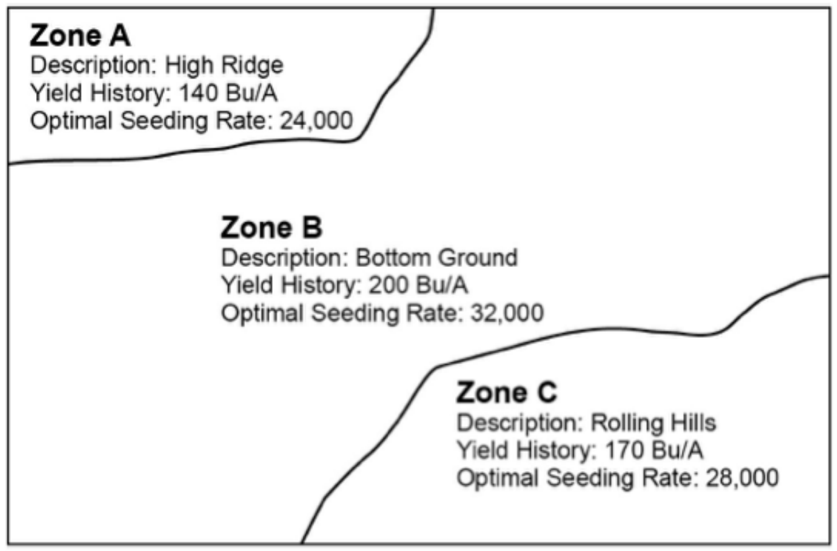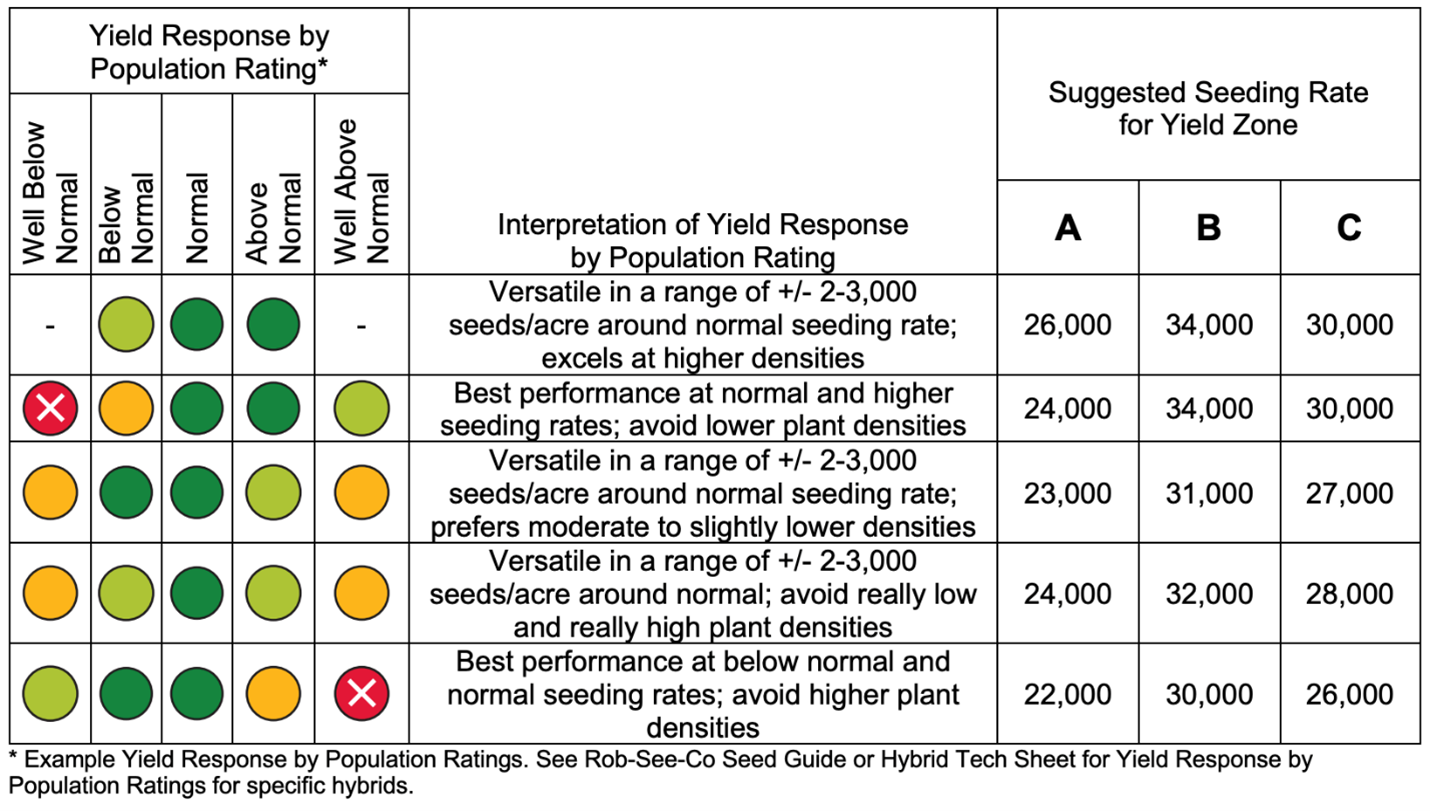Variable Rate Seeding Using the Population Ratings
Population Effect on Hybrids – A Refresher
In last month’s blog, we explored the ways that growers can ensure the best economic return possible, by planting with population in mind. To summarize, matching seeding rates (which Rob-See-Co provides for each of our hybrids) to the yield environments of the field will help to provide growers with the best potential return on investment. Be sure to visit our February blog [link again] for an in-depth look into understanding Rob-See-Co’s population ratings system.
Using Population Ratings in Variable Rate Seeding Decisions
In a perfect world, fields would be uniform and consistent from fence row to fence row. However, for most fields this simply isn’t the case. Changes in elevation, moisture, soil type and more create fields in which yields can vary greatly.
In these cases, variable rate seeding can be one solution to combat the challenges created by wildly different yield zones within individual fields. Let’s take a look at an example field to see how variable rate seeding is applied:
Just one Part of the Puzzle
When choosing hybrids and planting rates, it’s important to remember that population ratings are just one part of many considerations to take to ensure the best performance in the field. Choosing hybrids rated to perform well in specific field conditions and to meet certain needs (resistance to Corn Rootworm, drought tolerance, silage/forage performance, etc.) is also incredibly important. Making smart selections about crop inputs to support plant health from planting through harvest will also help growers to achieve their best ROI at the end of the season. Stay tuned to our blog throughout the year for more insights.
Zone A is a high ridge area, with the lowest historical yield in the field. Its optimal seeding rate based on that yield history is also the lowest in the field.
Zone B is a high-yielding area located in the bottom ground of the field. The optimal seeding rate is also highest in this portion of the field.
Zone C is a rolling hill area, which sits between Zones A & B in terms of both yield and optimal seeding rates.
As you can see, the chart below takes into account both the yield history and performance of the various areas of the field, while also considering the yield responses of the various hybrids based on their suggested population ratings. Even in the highest-yielding areas of the field, hybrids rated better with average plant densities are still planted at lower populations than those hybrids shown to excel with higher density planting.
(Please note that these yield responses are provided as examples, and you should refer to seed guides and tech sheets for yield response by population ratings for specific hybrids.)


